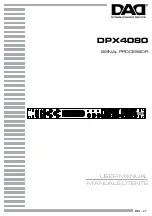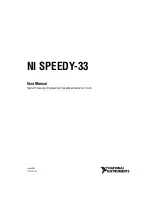
2 2
Stereo Link: Depressing the Stereo Link switch links the two compressor
channels for stereo operation. In stereo mode, the compressor will react to
either channel, while reducing gain in both channels. Both channels of the
866 are identical in control and function EXCEPT when placed in the stereo
mode. In stereo mode, the channel 1 controls become the master controls for
both channels, while the Input Gain controls remain independent for each
channel.
The rear panel inputs and outputs and their functions are as follows:
Input: The inputs of the 866 will accept line level signals, either balanced or
unbalanced. A 1/4" tip-ring-sleeve phone jack and an RCA phono jack are pro-
vided for each input. Using the 1/4" input jack disconnects the RCA input jack.
Output: The outputs of the 866 will drive either balanced or unbalanced lines.
A 1/4" tip-ring-sleeve phone jack and an RCA phono jack are provided for each
output. Both the 1/4" phone jacks and the RCA jacks may be used at the same
time.
Side Chain Input: Allows access to the signal detector circuit of the com-
pressor, permitting control of the compressor with another signal for such
applications as "ducking". When used with the Side Chain Output, the original
input signal can be modified for applications such as "de-essing". Inserting a
plug into this jack opens the internal side chain path so that the detector will
only respond to the signal at this jack. In the stereo mode, both channels of
the compressor react as one.
Side Chain Output: The Side Chain Output is the buffered output normally fed
to the detector. It is used in conjunction with the Side Chain Input to modify
the detector signal for special applications such as "ducking" and "de-essing".
For these applications, the Side Chain Output signal is sent to a signal proces-
sor and returned through the Side Chain Input.
A
PPLICATIONS
The flexibility of the 866 allows it to perform many signal processing tasks
with equal ease and clarity. Here are a few concepts necessary to understand
before using the 866.
Two of the most common applications for the 866 are simple compression
and limiting. Compression and limiting are performed in a similar manner,
with two important differences: the Compressor Threshold level and the ratio
settings for compression are usually much lower than for limiting.
Signal Processors 18-0121-B 6/8/99 10:25 AM Page 22







































